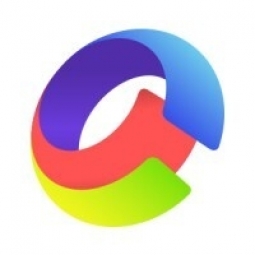Technology Category
- Application Infrastructure & Middleware - Event-Driven Application
- Infrastructure as a Service (IaaS) - Cloud Databases
Applicable Industries
- Cement
- National Security & Defense
Applicable Functions
- Maintenance
Use Cases
- Cybersecurity
- Time Sensitive Networking
Services
- Cybersecurity Services
About The Customer
The customer in this case study is the online gaming industry. This industry is characterized by a high volume of data, transactions, and simultaneous users. It is a highly competitive industry where the quality of user experience can significantly impact customer acquisition and retention. The industry is also faced with high IT costs and the need to safeguard against cyber security threats. The online gaming industry requires solutions that offer high availability, reliability, fault tolerance, and scalability. They need to deliver a consistently exceptional user experience to keep global gamers engaged. The industry also needs to reduce capital expenditures (CAPEX) and operating expenses (OPEX) while ensuring the lowest latency, safest, and most secure gaming experience.
The Challenge
Online gaming companies are faced with the challenge of maintaining a consistently exceptional user experience to keep global gamers engaged. Any less than perfect performance can lead to frustration among gamers and drive them to other platforms. Issues such as poor network connections, lag times, jitter, and downtime can negatively impact the gaming experience, especially when the games are getting faster, richer, and more interactive. High utilization of server resources, high IT costs, and the need to safeguard against cyber security threats place a heavy strain on gaming providers. These factors make it increasingly difficult for online gaming companies to acquire and retain customers, offer new products and features that customers will pay for, and sustain revenue growth. Gaming is among the most demanding applications due to its sheer volume of data, transactions, and number of simultaneous users.
The Solution
To address these challenges, gaming companies are turning to solutions that offer the highest availability, reliability, fault tolerance, and scalability. CDNetworks’ online gaming solution provides a low total cost of ownership (TCO) along with security, low latency, high availability, and scalability. This comprehensive solution is available without requiring costly investments and amortizations in unmanaged hardware and software. This approach empowers gaming companies to reduce capital expenditures (CAPEX) and operating expenses (OPEX), while enjoying speed at scale to deliver the lowest latency, safest, and most secure gaming experience available today. CDNetworks accelerates game content and reduces lag times, regardless of market, to deliver an optimum experience to gamers around the world. It also helps identify and mitigate cyber attacks intelligently to protect online gaming infrastructures and keep players safe on the digital battlefield. CDNetworks also offers cloud-based infrastructures and local PoPs worldwide to slash capital expenditures and management costs while delivering attractive returns on investment (ROIs).
Operational Impact
Quantitative Benefit

Case Study missing?
Start adding your own!
Register with your work email and create a new case study profile for your business.
Related Case Studies.

Case Study
System 800xA at Indian Cement Plants
Chettinad Cement recognized that further efficiencies could be achieved in its cement manufacturing process. It looked to investing in comprehensive operational and control technologies to manage and derive productivity and energy efficiency gains from the assets on Line 2, their second plant in India.

Case Study
Data Capture for Afghanistan Forces
Electronic equipments on the field of Afghanistan provided information on the status of the vehicle and to identify potential threats surrounding it to the British Force. The monitoring and interpretation of this data requires robust and sophisticated digitization for data capture and communication.

Case Study
Digital Transformation of Atlanta Grout & Tile: An IoT Case Study
Atlanta Grout & Tile, a Tile, Stone & Grout restoration company based in Woodstock, Georgia, was facing challenges with its traditional business model. Despite steady growth over the years, the company was falling behind the web revolution and missing out on the opportunity to tap into a new consumer base. They were using independent software from different vendors for each of their department information and workforce management. This resulted in a lot of manual work on excel and the need to export/import data between different systems. This not only increased overhead costs but also slowed down their response to clients. The company also had to prepare numerous reports manually and lacked access to customer trends for effective business decision-making.
Case Study
Enhancing Security and Compliance in Remitly's Global Money Transfer Service with Fastly
Remitly, an online remittance service, was faced with the challenge of securing its proprietary global transfer network. The company needed a security solution that could meet PCI requirements and protect customers' sensitive transactions through its mobile application. The solution had to be capable of defending against new and emerging attack types without impacting performance. Remitly also had to deal with irregular traffic patterns, such as a sudden spike in account transfers from a small network segment on the Pacific coastline of South America. The company needed to determine in real time whether such traffic indicated an attack or valid requests. A traditional web application firewall (WAF) would not be able to distinguish this traffic, potentially leading to customer frustration if the IP was blacklisted.

Case Study
Major Aerospace Company Automates Asset Management
The O&M division of an aerospace and global security company was using spreadsheets to manually track more than 3,000 assets assigned to students and staff. Maintaining audit trails for this high volume of equipment became increasingly time-consuming and challenging. The chore involved knowing precisely what equipment was on hand, what had been issued, its location and the name of the custodial owner of each item. Every aspect of this task was carried owner of each item. Every aspect of this task was carried out by individuals with spreadsheets. Manually documenting the full lifecycle of each asset added to the burden. This included tracking maintenance requirements and records, incidents and damages, repairs, calibrations, depreciation, and end-of-life data.








